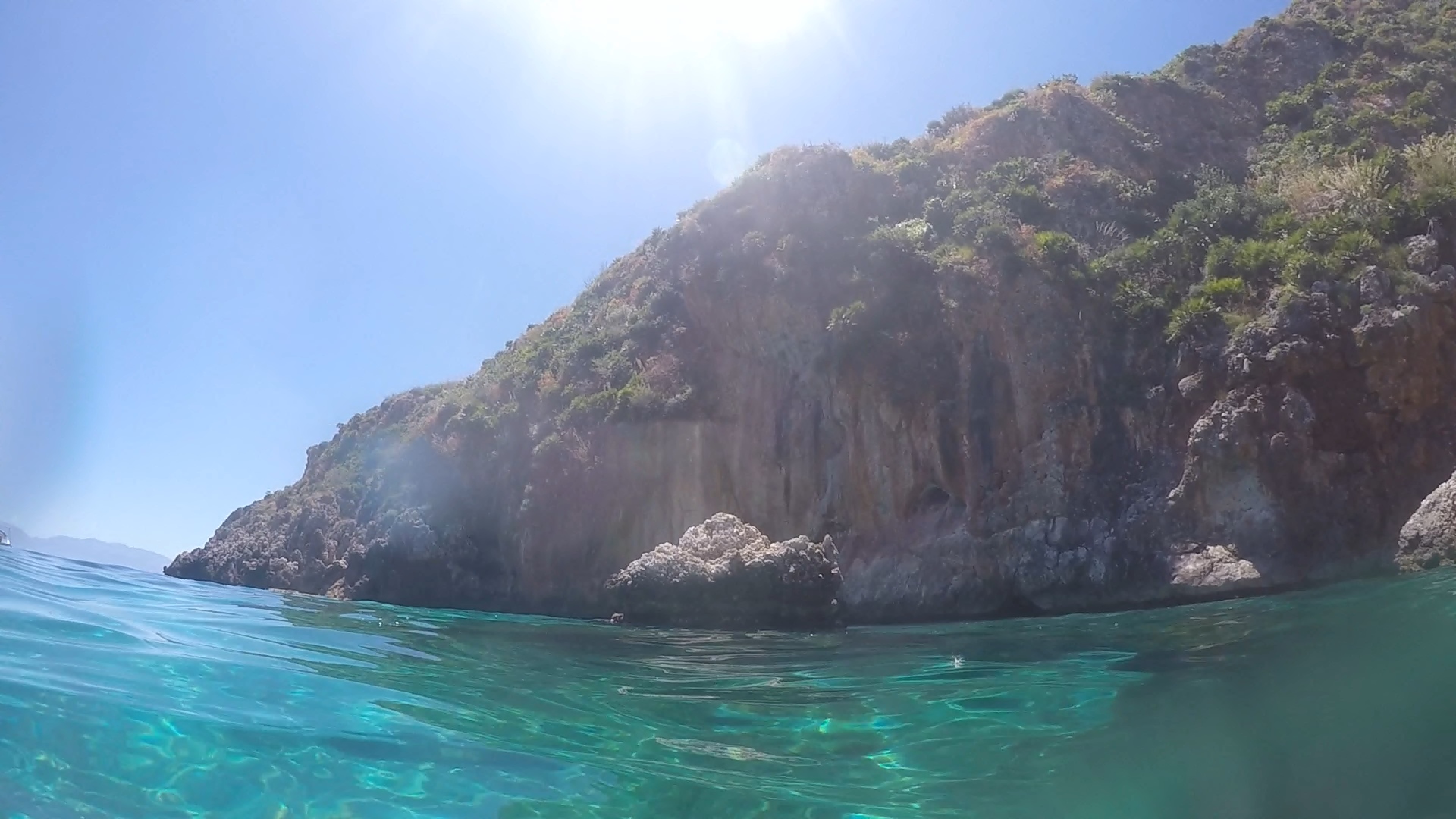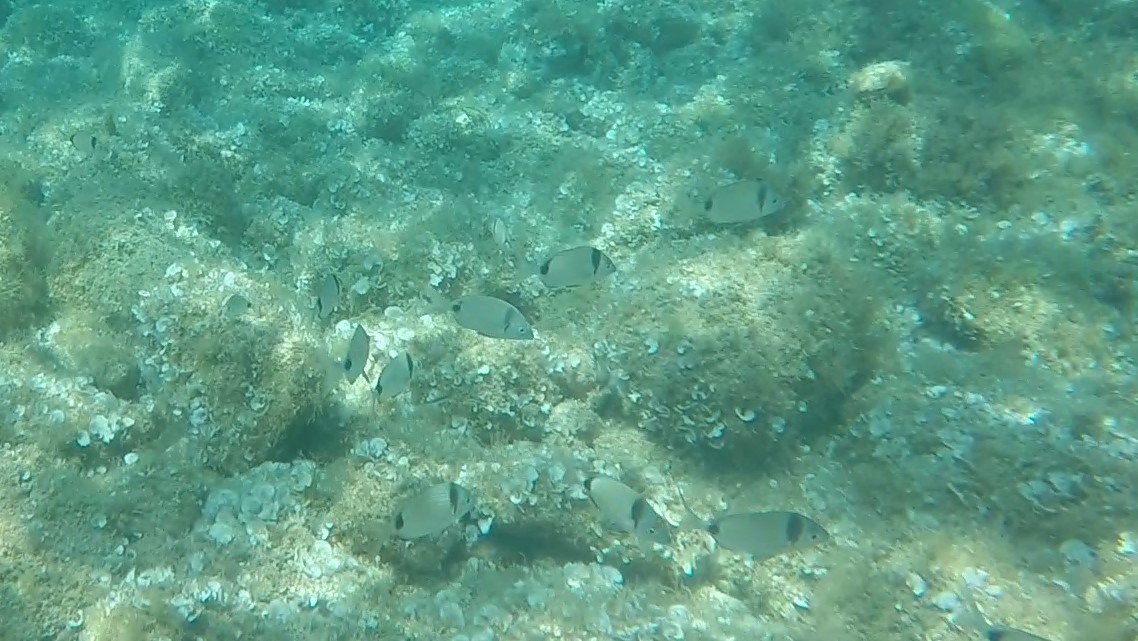Where: San Vito lo Capo/ Sicily/ Italy
When: June/2016
Water temperature: cold
Visibility: more than 20 meters
Approximate depht: 1-2 meters
Main attractions: Mediterranean fishes
Duration: approximately 4 hours
The Zingaro Reserve (Riserva dello Zingaro), is a Sicilian nature reserve, the first created in this region. But it is not just that, it contains many pebble beaches, with a really aquamarine colored water on its 7 km coast, making it one of the most impressive landscapes that I went in my lifetime.

It is situated west from Palermo, more precisely between Scolpello and San Vito lo Capo. We decided to stay in San Vito lo Capo to access Lo Zingaro, and I advise people to do the same since it makes the trip less time consuming, and San Vito lo Capo is a great place to stay!
The park starts over a limestone cliff, and if you intend to see the different beaches you will have to walk up and down hills. But it is worth! The light blue ocean of the Tyrrhenian Sea, in contrast with the grey limestone cliffs, is superb.

The water, once you are inside it, looks like you are on a swimming pool, and prepare to feel some cold if you intend to stay longer on water, even at Summer time.

There are not a great abundance of fishes, but if you start exploring, probably will encounter a considerable amount of species.
These were the ones I found:

Common two-banded seabream _ Diplodus vulgaris

Like it names says, this is a common sight underwater. Often swimming in big groups.
They have a silvery color, with two black vertical bands: one near the transition between the body and tail, the other separating the head and the body.
They are not too shy, some came more close when I was entering the water (probably because I was revolving sediments from the rocky bottom).

Damselfish _ Chromis chromis

These fishes feed on small planktonic animals. They stand on middle water, most often in groups of 5 or more.
Their bodies are light or dark grey, with darker caudal, anal and dorsal fins.
Little black spots, like on the picture below, show how you will identify them from a distance:

East Atlantic Peacock Wrasse _ Symphodus tinca

This is nice wrasse to find, body in a pale yellow color with some horizontal lines, it has a blue tail same as its terminal anal and dorsal fins.
I saw some near the pebble floor, not in large number though.
Five-Spotted Wrasse _ Symphodus roissali

Its name comes from the five spots it has on the dorsal fin, but it is not an easy way to recognize it.
I prefer to say this is a silver fish with irregular dark brown stains all over its body.
They are said to inhabit the seagrass covered rocks.
Grey mullet _ Mugilidae family

The grey mullets are a familly of fishes that occur worldwide in tropical and subtropical regions. They are very similar between species, so very hard to differ just by looking them through snorkeling.
The ones I saw were on the clear rocks, blending with the landscape, like on the photo above.
Ornate Wrasse _ Thalassoma pavo

This is one of the most common fishes I found over there, and a very nice one!
It is a multicolored wrasse (green-brownish body with light blue lines). You encounter it on rocks, even in shallow waters, very active all the time.

Painted Comber _ Serranus scriba

These fish are from the same family as the groupers, the Serranidae family. They feed of small crustaceans and little fishes.
Found on rocky bottoms and seagrass beds, and not a rare finding at all.
It draws attention since its white body with many irregular vertical bands looks like a modern art painting. The yellow tail and pectoral fins are nice too.

Red-Black Triplefin _ Tripterygion tripteronotum

The name triplefin comes from its dorsal fin, which is separated into three parts. It has a red body with a dark head, the pectoral fins are very large.
This was the only one I encountered, and as his relative blenny, it was very shy, so the meeting didn’t last long.
Saddled Seabream _ Oblada melanura

This is a very common fish, with a silver body and a black spot near the tail, surrounded by a white halo. They have a small head. Most often seen in groups, near rocks.

Salema _ Sarpa salpa

Silver fish with many thin yellow lines on its body. Of the same family as the porgies and sea breams, the Salema has a very interesting particularity, it can cause hallucinations to people that eat it.
Some articles say that the Romans used to eat these fish for recreational purposes. But do not try, there are even reports of neurologic effects that last 36 hours! I pass it!
Found some schools of them, and this is how they are most commonly seen
Surmullet _ Mullus surmuletus

From the goatfish family, this mullet is a bottom swimmer, that can even be encountered at high depths. They have some chin barbels, which they use to probe the places for food.

Tompot Blenny _ Parablennius gattorugine

This one was not easy to identify, but after seeing some pictures of the different blennies in this area, I believe it is the Tompot.
The body pattern is of irregular brown stripes lighter and darker, with white spots near the dorsal fins, and a red/brown tail.
Overall:
It is worth visiting the place just by the scenery. But if you go there and enjoy snorkeling, be sure to spend some time underwater!
My Youtube video:
Pin it:
